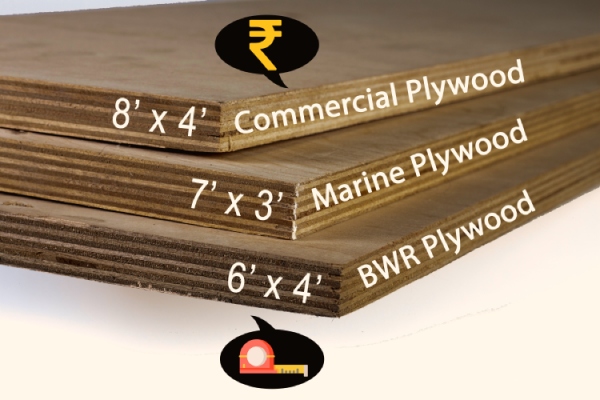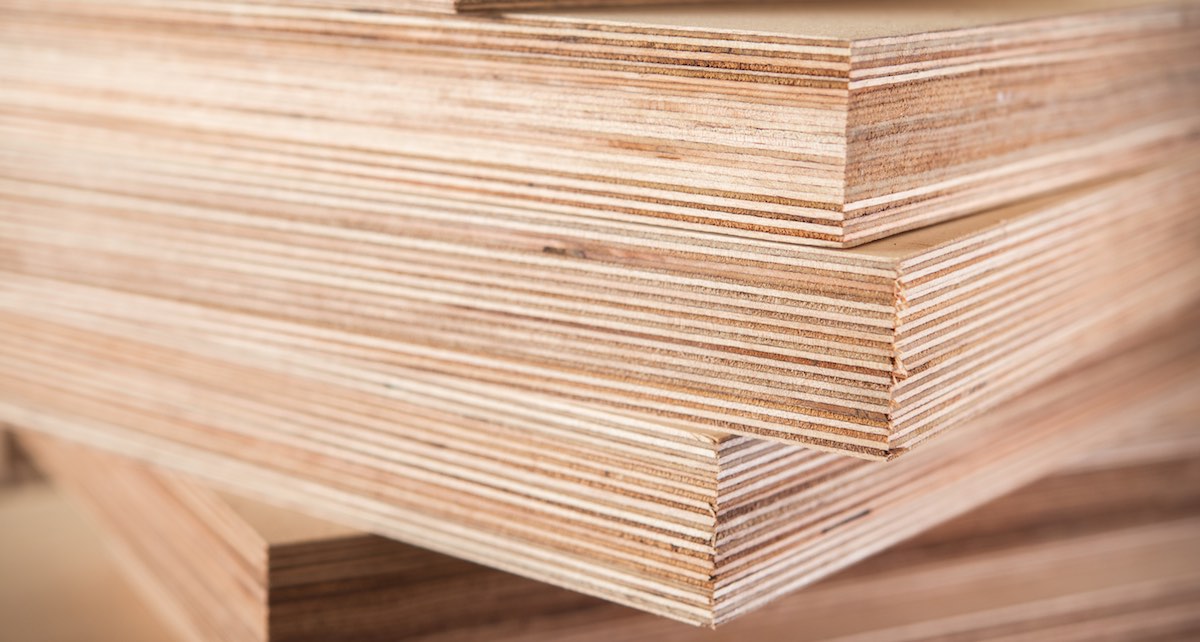Unlocking the Secrets of Plywood Dimensions
As DIY enthusiasts and home improvement aficionados, understanding the intricacies of building materials is crucial for successful project execution. Among the essential materials in any construction endeavor is plywood, a versatile and sturdy wood paneling commonly used for flooring, roofing, and structural applications. But have you ever wondered, “How many square feet are in a sheet of plywood?” In this comprehensive guide, we’ll delve into the dimensions of plywood, empowering you with the knowledge to plan and execute your projects with precision.

Image: gharpedia.com
Defining Plywood: The Foundation of Many Projects
Plywood, a manufactured wood panel, comprises multiple thin layers of wood veneers glued and pressed together. Compared to solid lumber, plywood offers superior strength, stability, and resistance to warping or bending. Its cross-laminated construction enhances its ability to withstand forces from both directions, making it an ideal choice for load-bearing applications.
Thickness, which influences plywood’s structural integrity, is typically measured in fractions of an inch. Common plywood thicknesses range from 1/8 inch to 1 inch, with 1/2 inch and 3/4 inch being the most widely used. Sheet size, another critical dimension, is measured in feet and varies depending on the intended application.
Calculating Square Footage: A Formula for Accuracy
Determining the square footage of a plywood sheet is a straightforward process. Simply multiply the length (in feet) by the width (in feet) of the sheet. For instance, a sheet of plywood measuring 4 feet by 8 feet would cover 32 square feet (4 x 8 = 32).
Knowing the dimensions of plywood is essential for material estimation, cost planning, and optimal project execution. It enables you to order the appropriate amount of plywood, ensuring you have enough to complete your project without excess waste.
Common Plywood Sheet Sizes: Uncovering the Industry Standard
In the world of plywood production, standardization plays a vital role. To streamline manufacturing processes and cater to the diverse needs of builders and contractors, several standard plywood sheet sizes have emerged. These common sizes ensure compatibility with various applications, including:
-
4 x 8 feet: This size is the most commonly available and versatile, suitable for a wide range of projects.
-
3 x 6 feet: Often used for smaller projects, such as cabinetry or shelving, due to its manageable size.
-
5 x 10 feet: Ideal for larger projects, such as roofing or flooring, where wider coverage is required.
-
6 x 12 feet: Primarily used for industrial applications or specialized construction projects.

Image: rvforums.com
Plywood Thickness and Its Impact: Understanding Structural Capacity
Plywood thickness directly influences its ability to bear loads and resist bending. For example, 1/2-inch plywood is suitable for non-load-bearing applications like wall or ceiling sheathing, while 3/4-inch plywood is ideal for load-bearing applications like flooring or subflooring. Understanding these characteristics allows you to select the appropriate thickness of plywood for your specific project requirements.
Expert Insights: Unleashing the Secrets of Plywood Usage
To elevate your plywood knowledge, let’s tap into the wisdom of renowned experts in the industry:
-
“Selecting the right plywood thickness is crucial for ensuring structural integrity without overspending on thicker plywood than necessary.” – Jack Trueman, Master Carpenter
-
“Storing plywood flat and protected from moisture is essential to prevent warping and maintain its shape for optimal project outcomes.” – Sarah Jones, Architect
Actionable Tips: Empowering Your Plywood Prowess
-
Measure the area you need to cover before purchasing plywood to determine the required square footage. This prevents excess waste and ensures you have adequate material.
-
Consider the strength demands of your project when selecting plywood thickness. Opt for thicker plywood for load-bearing applications and thinner plywood for non-load-bearing applications.
-
Store plywood in a dry, well-ventilated area to prevent moisture-related damage and preserve its structural integrity.
How Many Square Feet Are In A Sheet Of Plywood
Conclusion: Mastering Plywood Dimensions for Flawless Projects
Understanding the square feet in a sheet of plywood is a cornerstone of successful building projects. By comprehending plywood dimensions, types, and applications, you gain the power to make informed decisions about material selection and project execution. Remember, precise measurements, appropriate thickness selection, and proper storage techniques are the keys to unlocking the full potential of this versatile

